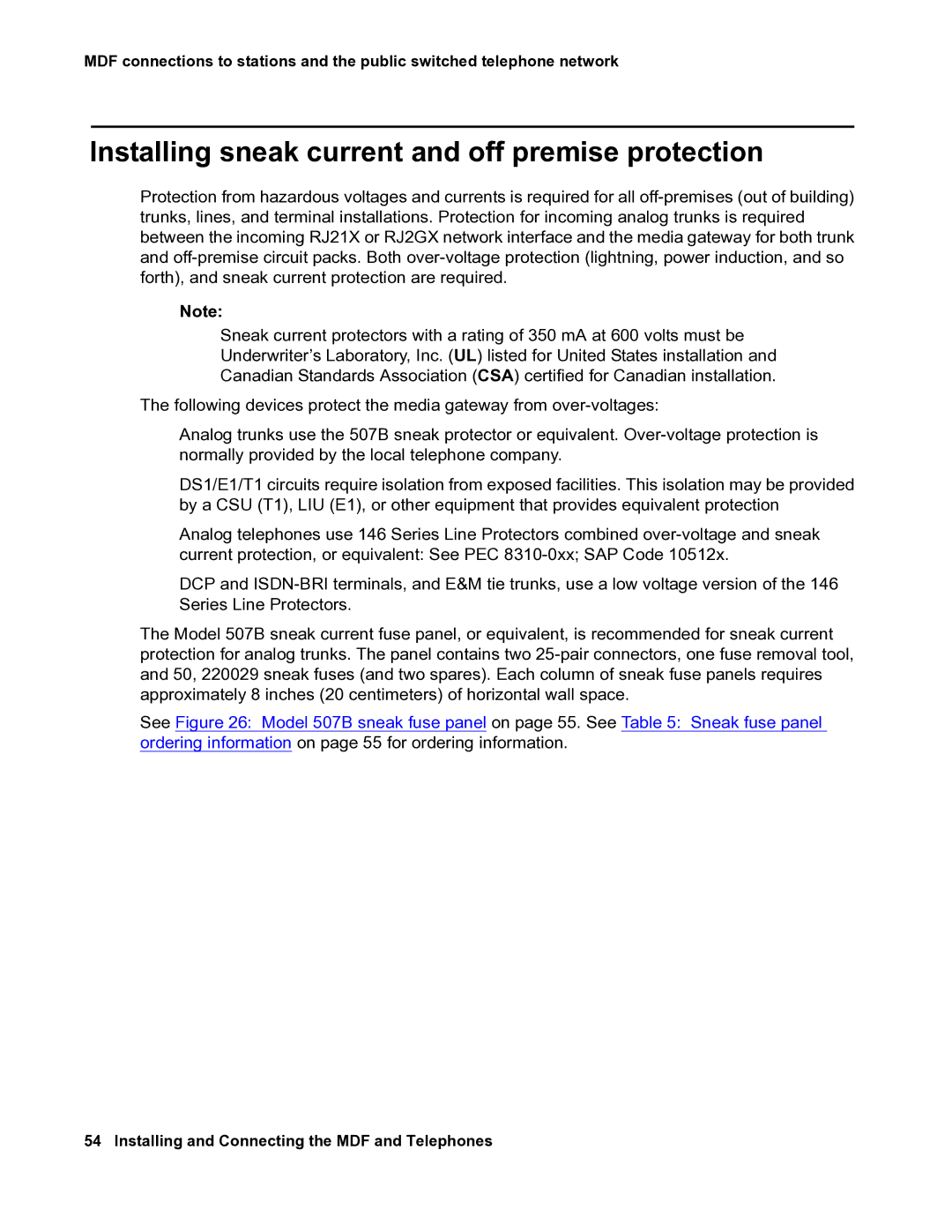MDF connections to stations and the public switched telephone network
Installing sneak current and off premise protection
Protection from hazardous voltages and currents is required for all
Note:
Sneak current protectors with a rating of 350 mA at 600 volts must be Underwriter’s Laboratory, Inc. (UL) listed for United States installation and Canadian Standards Association (CSA) certified for Canadian installation.
The following devices protect the media gateway from
●Analog trunks use the 507B sneak protector or equivalent.
●DS1/E1/T1 circuits require isolation from exposed facilities. This isolation may be provided by a CSU (T1), LIU (E1), or other equipment that provides equivalent protection
●Analog telephones use 146 Series Line Protectors combined
●DCP and
The Model 507B sneak current fuse panel, or equivalent, is recommended for sneak current protection for analog trunks. The panel contains two
See Figure 26: Model 507B sneak fuse panel on page 55. See Table 5: Sneak fuse panel ordering information on page 55 for ordering information.
54 Installing and Connecting the MDF and Telephones
